Gin slinger to vine tender
Joe Stenberg was studying physiology at Auckland University when he opted for an elective paper in viticulture, delving a little deeper into the wines he was pouring in his part time bar job.
OPINION: Whenever I present Te Mata's wines into markets, I often begin by saying that our winery's story is a weird one.
It's not usual in New Zealand history to be talking about a nineteenth century wine estate, nor a company that's remained independently owned for so long.
The Buck and Morris families bought Hawke's Bay's Te Mata Estate 50 years ago this year, continuing the legacy of New Zealand's first commercial winemaking endeavour. Now, 132 years after Bernard Chambers planted the first vines, there are new generations stepping into the shoes of the bold, forward-thinking innovators who've brought Te Mata this far. All those people were prepared to roll the dice on how much sunshine Hawke's Bay gets each summer. And all of them held to their belief that fine wine of exceptional quality could be grown on these hills.
Planting Havelock North hillsides
Te Mata's vines were first planted in the 1890s, producing Cabernet, Chardonnay and Pinot Noir from sites we still use. A tall pitch-roofed tank room, hewn from matai, was built soon after, with the first official vintage in 1896. "My first clarets are coming along well," recorded Bernard Chambers in his diary.
Bernard grew up at Te Mata Station, and in the late 1880s travelled across Europe and the United States with his two elder brothers on a 'Grand Tour', that introduced him to the latest techniques of agriculture and horticulture. In 1892 he planted vines on the slopes of Te Mata Peak, on three parcels above the homestead, and started making dry European style reds for export back across the world.
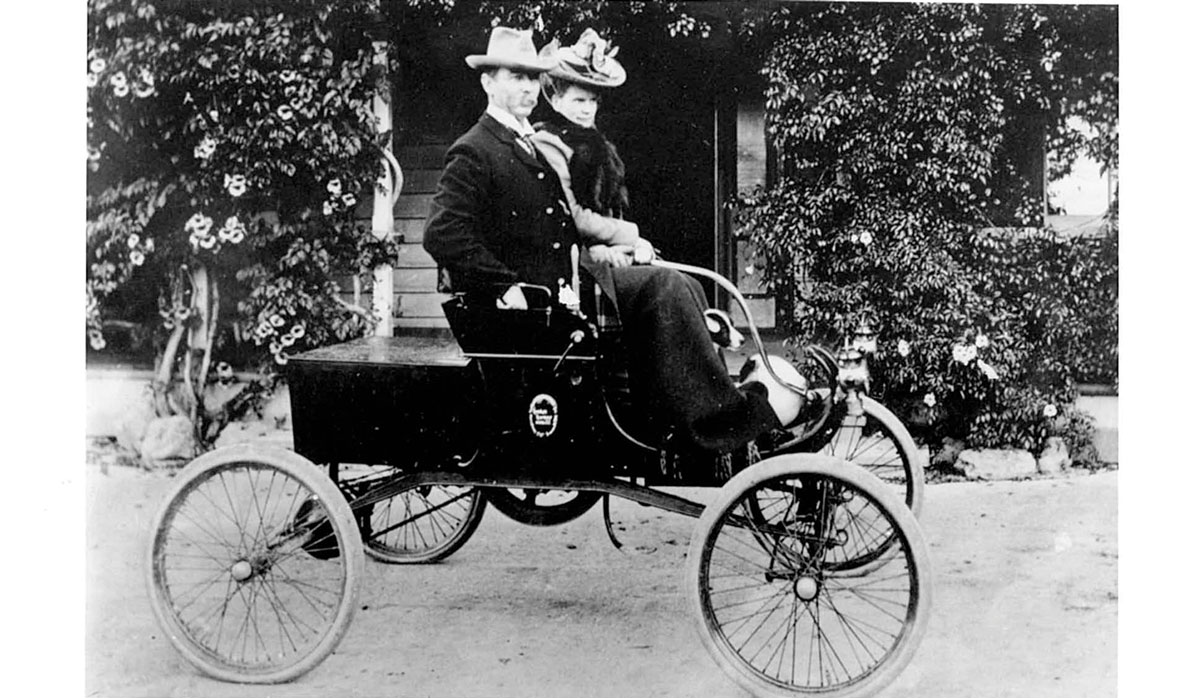 |
|---|
|
Te Mata Estate founder Bernard Chambers and his wife Elizabeth in their Oldsmobile - the first people in Hawke's Bay with a car. Bernard's family were known for innovation, with his brothewr John behind the bobsled course at St Moritz, and the hydroelectric dam at Mokopeka Station, one of the oldest continually operating hydroelectric plants in the world. The Chambers family started a local school and there's a wing of the Napier Art Gallery named for Bernard Chambers. |
By 1909 Te Mata was a well known brand across the country and New Zealand's biggest winery, with a focus on barrel-aged Cabernet and Chardonnay. The team making wine then was remarkable: a baker, reputedly a Welshman, who lived on site to provide food; an English overseer; four Italian staff (the Cacciopoli family from near Sorrento, who still have relatives in Hawke's Bay); Irish cellar hands and a Scottish barrel maker.
Like all New Zealand wine enterprises in the early to mid-20th century, Te Mata was affected by the Temperance movement, prohibitive licensing, and the commercial realities of having to constantly pivot and supply markets.
In 1974, when my parents John and Wendy Buck become involved, along with their friends and business partners Michael and June Morris, they viewed it as a restoration project. There was amazing heritage and proven vineyard sites for Cabernet, but they knew everything needed a lot of work to accomplish their goals.
Bernard was bold, innovative and forward looking, and my parents and the Morrises shared a similar ambitious vision for the place and its red wines, specifically developing a three-phase development plan which only wrapped up in 2019. This included establishing the best red wine fermentation spaces we felt suited the wines we wanted to make. It also meant replanting almost all our sites. The national vine pull in the 1980s forced everyone's hand in that regard, but Te Mata was already invested in developing new sites with different clonal stocks, soils, and aspects, to enhance our capacity in subregional Hawke's Bay wines.
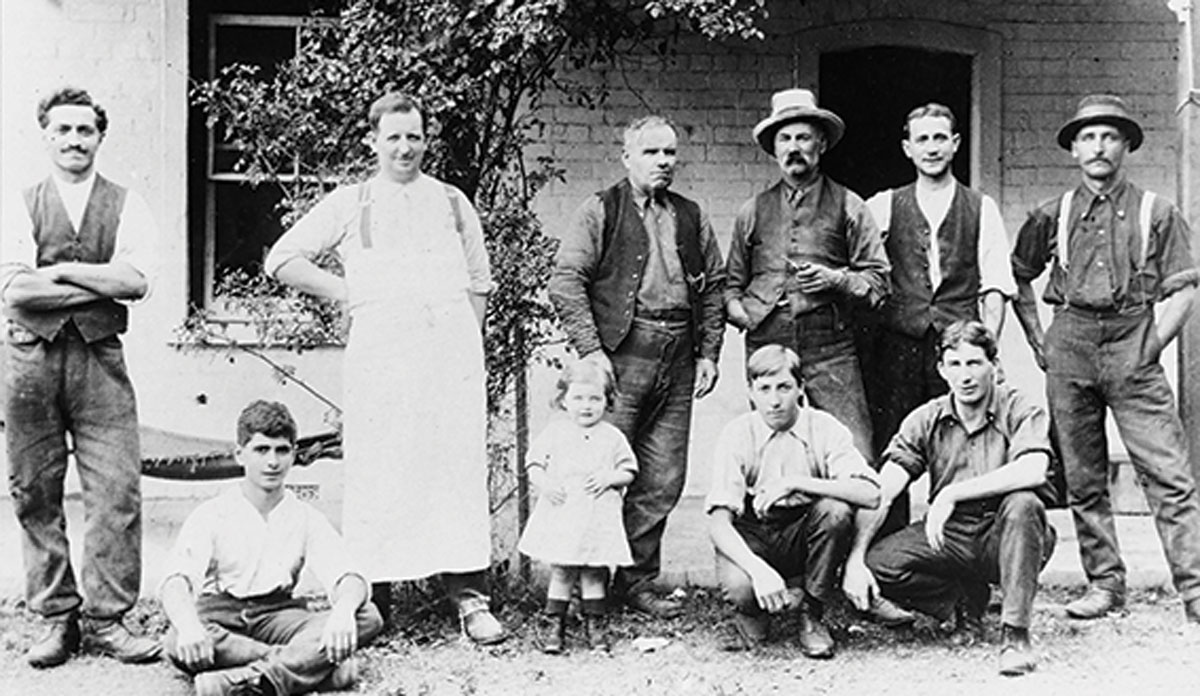 |
|---|
|
The Te Mata crew in 1913, above, and 2013, below. |
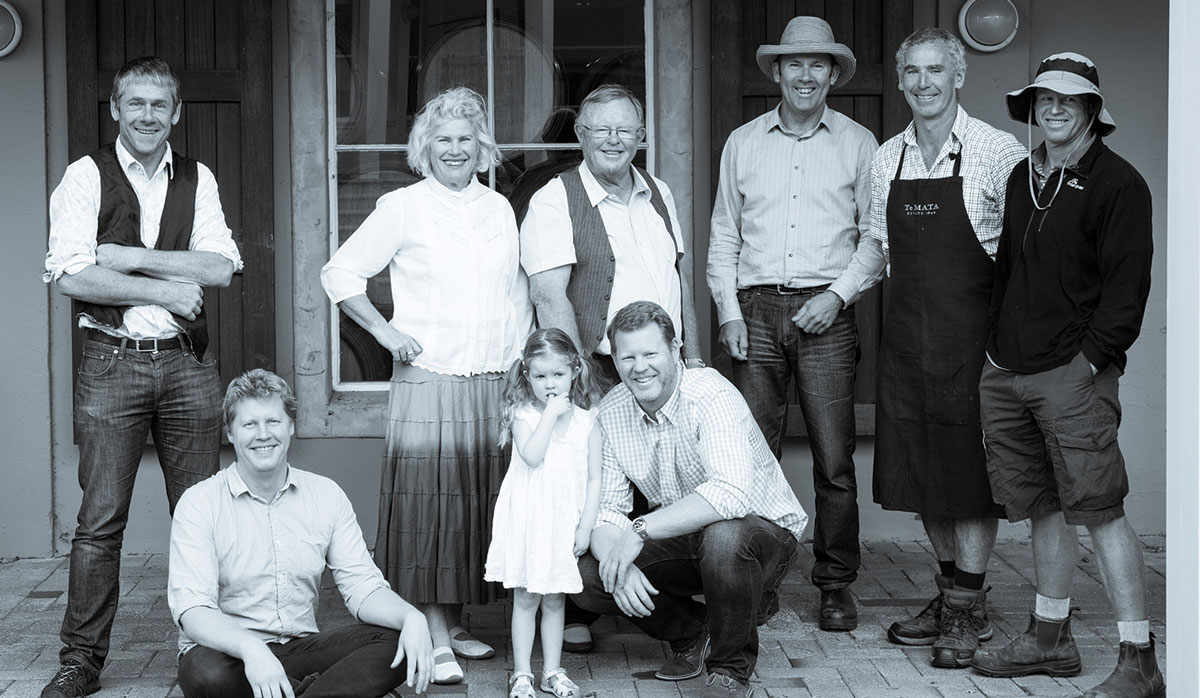 |
|---|
|
|
Long relationships with tonneliers in France, and experience and experimentation in barrel handling, kept reaping rewards, as did the steady exchange of staff between leading wineries in the US, France, Australia and beyond.
Growing up in the vines
While our parents' generation were getting ahead with manifesting their dream, another generation was growing up in the middle of it, and going on to build their own lives with new kinds of connection to that vision.
Our life as a family was centred around the winery and there was seldom a day off. I don't mean this in an oppressive way, but vineyards are like orchards and farms. We certainly were emotionally-tied to Hawke's Bay and the public success of the wines.
The Ian Athfield-designed house we lived in was a statement of the creativity and daring behind it all. It was also famous for being photographed. I remember being very young, watching Saturday morning cartoons in my pyjamas, and being startled by people wandering past the windows and through the vines. My brothers and I all worked on site as kids, in the vineyards and cellars, on the line bottling, and at the cellar door. I think I was the laziest, and remember playing around at the winery on weekends. When I was 13 or so I recall being quite fond of napping in the fruit bins on my breaks.
As a younger kid I was also sometimes confused about who was in our family and who wasn't. We'd spend so much of our family time with the team, working or in the smoko room, and I was so used to mum and dad talking with the winemakers or vineyard crew at the dinner table, that I had to have it clarified exactly who was my uncle or aunt.
Te Mata depended on its strong team culture, like a hardworking yacht crew or top rugby team working together. And behind it all there was also a strong and proud sense of independence, of a desire to push ahead and pave a new road for fine wine.
My eldest brother Jonathan worked at the winery and overseas for years, and had a reputation for being incredibly hard-working. Now he's Chief Executive of our largest vineyard site, Woodthorpe Terraces. He and his wife Megan raised three kids in that vineyard and he manages every aspect of the property.
My middle brother Nick is Chief Executive of the winery. He also spent years overseas working at top wine estates and in the thick of commercial wine in London. He's always maintained a focus on sales, management, and operations - as well as understanding the wider world of wine. He lives in the Te Mata vineyards too.
After a few years in a cottage opposite the winery, working and hosting overseas vintage staff at Te Mata each year, I'm now based in Amsterdam, working across our European markets around that part of the globe.
I've been responsible for other markets before, selling our wines into Singapore, Australia and the United States. Over the years I've worked in every part of the business, though I've a fondness for the packaging and bottling department, having spent many teen summers working in that warehouse with Brian Margetts and Karl Wills. I know the packaging side of wine isn't deemed glamorous by many, but in a winery at the deliberately-considered scale of Te Mata, bottling and labelling your own wines in sight of the vineyards is really the crown jewel in the ecosystem. It's the final step in carrying that ethos of 'attention to detail' right through to the customer.
There are elements of that everywhere at Te Mata. At the end of each day all the winery hoses are still coiled in individual tidy spirals. Fiona and Alistair Morris, a daughter and son of June and Michael, are directors of the business, and Alistair is Chair. My mum Wendy, who really did everything that makes the business run, is a director too. Dad stepped back just last year from his role on the board to let me on, though he's still fairly inseparable from the winery, living on a Te Mata vineyard just a few minutes away.
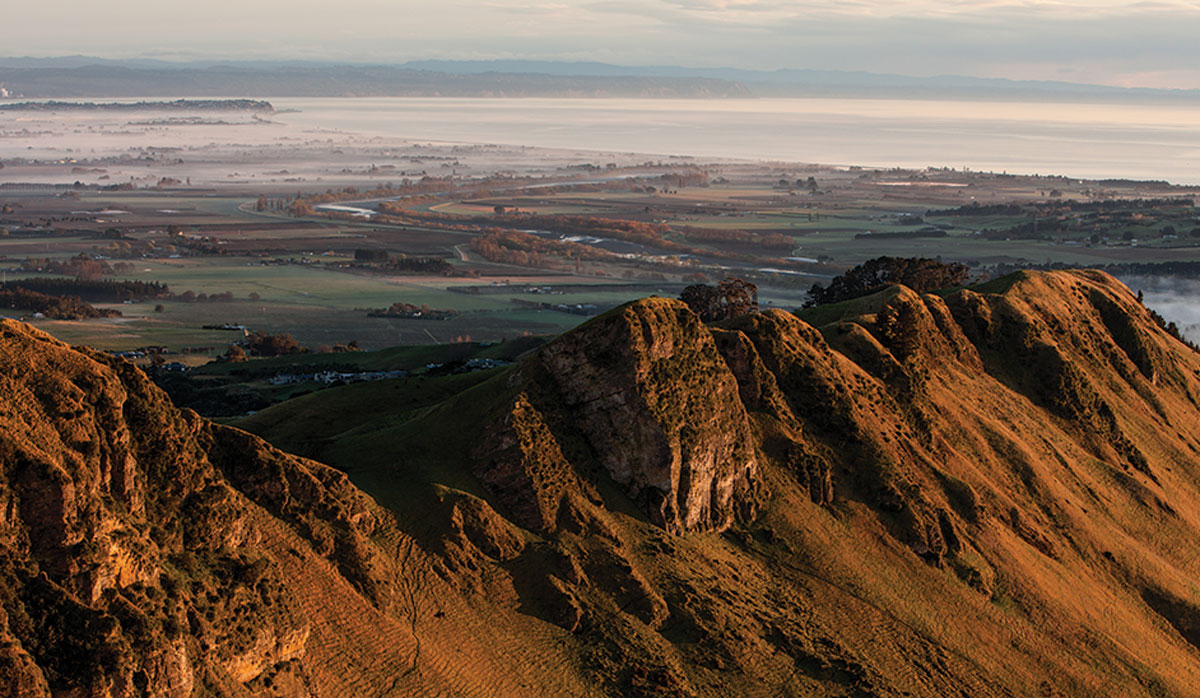 |
|---|
|
Te Mata o Rongokako - Te Mata winery is named for the peak above the foothills in which it sits, on the north face of Te Mata o Rongokako. The peak's name translates to the profile/face of Rongokako - a giant and ancestor of Ngāti Kahungunu. Photo Credit: Richard Brimer. |
The winemaking team is led by Phil Brodie, after Peter Cowley's long time at the helm, and has been assisted for many years by Marty Wallace. Larry Morgan's work as Te Mata's viticulturist has paved the way for Brenton O'Riley, who now leads the vineyard teams.
A shared legacy
I'm always proud to be able to talk about our family's story and our winery's story too. They are peculiar, and all the more interesting for it I believe. It helps people understand the time and commitment behind the wines we make.
I do still ruffle slightly at talk of wine dynasties though. When I think of Te Mata as a 'family winery' it's not my family I'm thinking of. It's the multiple generations of Morris, Cowley, Wills and Chambers families, and more; the many families and many teams working more than a century ago in this corner of the world, in these same buildings - their commitment to New Zealand wine.
Maybe we've benefitted from the good vintages. Maybe we've learnt something from the tough ones too. And with successive generations leading it forward we feel spry for a 132-year-old business.

Over the past three years or so, the New Zealand Winegrowers Board has consulted with members on proposals to reform…
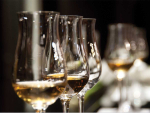
OPINION: New Zealand is the "last great bastion standing" when it comes to wine imports to the United States, wine-business…
The large 2025 harvest will exacerbate the wine industry's "lingering" supply from recent vintages, New Zealand Winegrowers Chief Executive Philip…
If you find a new consumer in a developed wine market, you are taking them from someone else, says Blank…
With the stars of Matariki to rise in June, Jeff Sinnott, a member of the Tuku Māori Winemakers Collective, looks at…